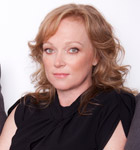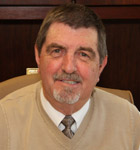
Rising to the rank of partner at accounting giant Arthur Andersen, Rhona Vogel knew how to meet the wealth-management needs of ultra-high net-worth (UNHW) families and their businesses. Convinced there was a better way to serve this niche market, Vogel started Brookfield, Wisconsin-based Vogel Consulting in 1993, seeking to create a multifamily office approach that would offer affluent individuals and business owners’ unbiased financial advice and integrated services in tax, estate, and investments. While Vogel’s vision looked radically different than the traditional trust company model at the time, she has since proven its viability. After nearly 20 years in business, Vogel Consulting now advises 30 families with a combined $2.5 billion in assets. Here, the entrepreneur shares the lessons she’s learned while building Vogel Consulting.
Many clients I worked with at Andersen had professionals who addressed different pieces of their financial needs—attorneys for the family business, accountants focused on personal tax compliance, bankers and financial planners overseeing cash and investments—but no one was looking at the big picture. My clients told me exactly what they wanted from one provider—I listened. Through the years, I’ve come to realize that the success of an integrated approach rests with our ability to help families consider and respond to the current investment environment, as well as how their financial strategy affects corporate partnerships, estate taxes, cash flow, and philanthropic goals over periods of time.
With silos of advisers, the right hand doesn’t know what the left hand is doing. For example, we work with many families to establish Grantor Retained Annuity Trusts (GRAT). Families typically invest money and assets into these trusts and, as the accounts grows, the money generated goes to their children without the burden of a gift tax. While this is a common planning tool, GRATs only work if the assets contained increase in value. That’s when you see the need for integration. We help ensure that the investments (stocks, bonds, private equity, and hedge funds) entered into the GRAT have the highest probability of growth, thereby maximizing the tax-free wealth-transfer opportunity.
Early on, we appreciated the importance of remaining intimately involved with our families, as well as continually presenting options and “if than” scenarios to our clients, because we came to learn how one change can affect an entire model. Of course we have defined processes but we will never settle for assembly-line service. We follow the Rolls Royce approach to wealth management—customized and finely tuned pieces working in concert with one another result in an exceptional finished product.
One of the most important, key lessons that I’ve come to learn is the importance of finding the right people for the right job. When first opening my doors, I naturally sought professionals such as bankers and financial planners. Quite frankly, that strategy bombed. I had too many employees who, while technically proficient in one area, were not well-rounded enough to understand all aspects of wealth management. Because the tax piece can be the most difficult to learn, I can take a technically strong CPA and train them on the investment and estate-planning components. I tried going the other way, and bankers and financial planners don’t really make good accountants.
We have a robust training curriculum for new employees and conduct training seminars for staff to keep them apprised of developments in our field. I’ve also come to appreciate the need for hiring professionals with good soft skills. Without a strong relationship, you can’t ask tough questions that need to be asked. Today, we have professionals with the necessary technical expertise who become intimately involved with their client families.















